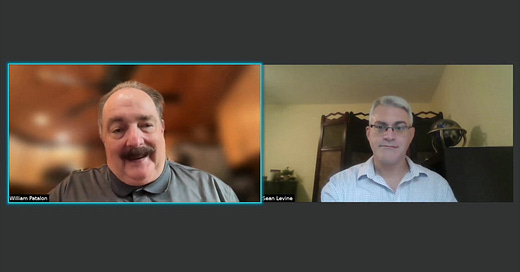In his annual note to shareholders earlier this year, JPMorgan Chase & Co. JPM 0.00%↑ CEO Jamie Dimon struck a bit of a dour note when he spotlighted the “unseen” decline in the U.S. stock market.
I say “unseen” because the decline isn’t in stock prices; Indeed, stock prices have hit record levels multiple times this year.
That unseen decline Dimon refers to is the drop in the actual number of stocks that are available for investors to buy.
According to Dimon, the number of U.S. companies trading on the key exchanges peaked at 7,300 back in 1996. That number has been cut by nearly half — to about 4,300. And it’s expected to be halved again in the next two decades to come.
The total “should have grown dramatically, not shrunk,” Dimon lamented, attributing the freefall to external challenges like geopolitics and internal ones like America’s deficit-spending addiction.
But even as the roster of public companies plummeted, another group saw their numbers soar: I’m talking about “private-market” firms — companies backed by private-equity (PE) money.
In fact, it’s one heck of a swing: Even as the number of public companies was almost halved, the number of private firms has zoomed nearly sixfold — from 1,900 to 11,200.
“There are good reasons for private markets,” Dimon wrote. “Companies can stay private longer if they wish and raise more and different types of capital without going to the public markets. However, taking a wider view, I fear we may be driving companies from the public markets. The reasons are complex and may include factors such as … costly regulations, cookie-cutter board governance, shareholder activism, less compensation flexibility, less capital flexibility, heightened public scrutiny and the relentless pressure of quarterly earnings.”
I used Dimon’s lamentation here for some very good reasons. He’s become the senior statesman of the U.S. financial system. He’s really good at “getting to the essence” of the top finance and investing issues. And, when it comes to this “shift” from public-to-private investing opportunities, he pretty much nails both the numbers and the cause.
So that leaves the “opportunity” – and the “how to do it” — to us.
And here at Stock Picker’s Corner (SPC), we’re happy to embrace both.
Our No. 1 role here is to help you folks excel as Wealth Builders.
To make that happen, we:
Identify the best storylines – the narratives that tend to deliver that wealth.
Detail the very best lessons – the “do this/not that” tips that keep you on that wealth path.
Bring you the best opportunities we see.
And educate you about all of this …
Here today — when it comes to private markets — I’m doing all four.
One of the big storylines I’m following right now is the massive private-equity push that’s taking place behind the scenes in the world’s financial markets. That’s creating all sorts of new opportunities … and one of the lessons I repeatedly share is “do not ignore big opportunities.”
But education is key.
Private companies probably play a bigger role in your life than you realize. Of the 33 million businesses here in America, more than 99% are privately held. So you’re probably buying products and services from private firms – as a consumer or through your company.
But do you ever look at those companies as an investment?
Probably not — even though the market is huge: McKinsey & Co. says “private assets” stood at $13.1 trillion last year — and have grown almost 20% a year since 2018.
Beneath the surface, we’re seeing change that’s creating even greater opportunity — because:
Fewer companies are “going public” – they’re staying private longer, or even forever.
Public companies continue to get bought out at a rapacious pace.
And new types of financing make it easier than ever for private firms to raise the money that’s the “fuel” for growth.
So why don’t more retail investors put some of their money in private firms?
The biggest reason: They don’t know how.
In today’s issue, I’ll help you change that.
I reached into my network of experts and invited Sean Levine, managing director of Houston financier Entoro Capital and an expert on this alternative financing, to give us a detailed introduction to private-market investing.
Sean also runs his own “service” — InvestmentX — which spotlights deals for retail investors (you can sign up for free here).
Check out our discussion …













Share this post